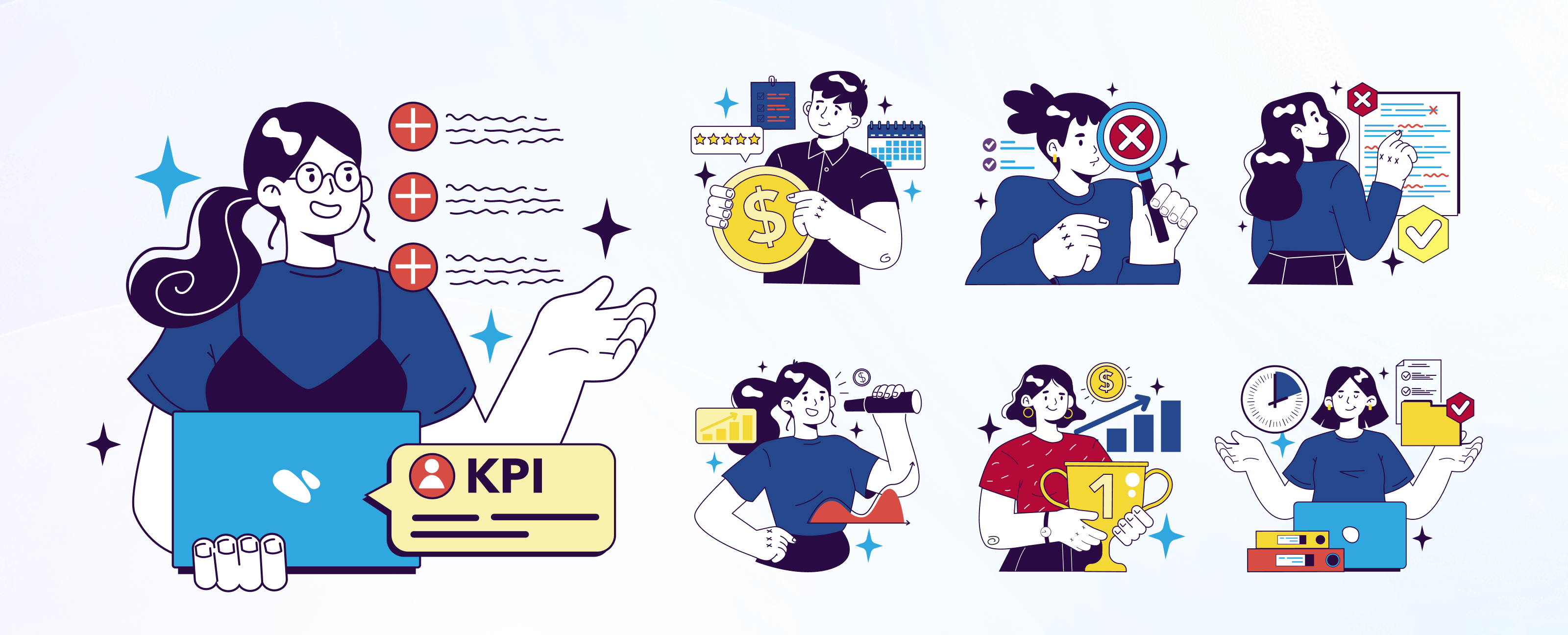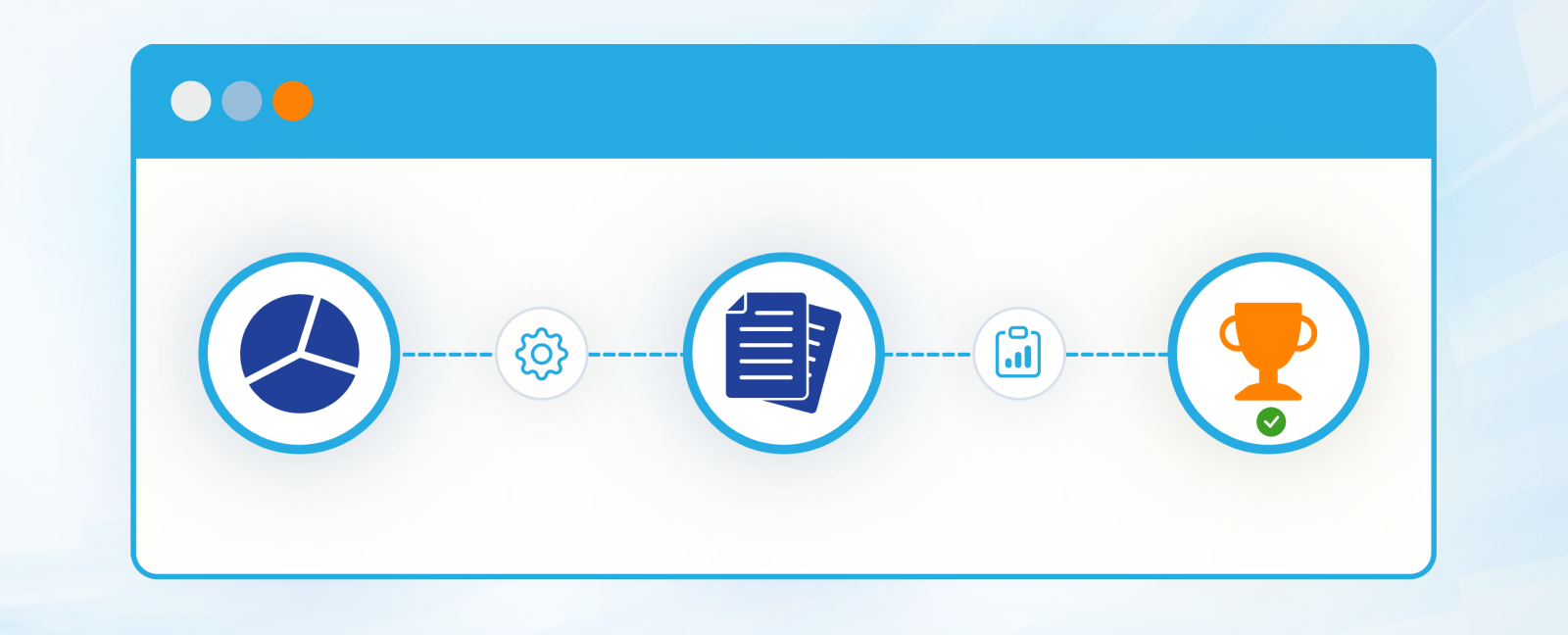
The Comedy of KPIs: Al-Meqyass Family Saga
Once upon a time, in a cozy suburban neighborhood, lived the Al-Meqyass family – a one-of-a-kind group of people with an unparalleled passion for order and measurement. Little did they know that their daily lives were governed by a complex web of Key Performance Indicators (KPIs), turning their household into a miniature organization.
Meet the chief, Mr. Al-Meqyass, a meticulous man with a natural affection for spreadsheets. His pride and joy? The Family KPI Dashboard; a colorful masterpiece detailing everything from school exam scores to the monthly savings rate. For Mr. Al-Meqyass, KPIs weren't just numbers; they were the heartbeat of the household.
Below is a partial snapshot of this dashboard, which infiltrated the web and other top-secret documents through family leaks, and its features. We could gather the rest from 127 seconds of accidental live streaming on Instagram through the grandmother’s account.
First on the list were the school exam scores, considered the academic barometer of the Al-Meqyass children. Each semester, Mr. Al-Meqyass eagerly awaited the report cards, armed with highlighters and stern expressions. Anything below an A was deemed unacceptable – a sentiment echoed by Mrs. Al-Meqyass, the ever-supportive chiefess, who kept a stash of motivational stickers for good measure. A quarterly meeting is held around the dining table, chaired by none but the Chief himself, to discuss performance versus previous periods and reprimand poor performers, threatening them with his limitless authority over their little lives.
Then there were the net monthly savings, a source of endless debate and occasional conflicts. Mrs. Al-Meqyass, the budget expert, took charge here, meticulously tracking expenses and scrutinizing every grocery receipt. Meanwhile, Mr. Al-Meqyass, the eternal optimist, would occasionally splurge on the latest gadgets, much to his wife's chagrin. The Chiefess could beat any modern CFO with cost optimization initiatives. Consequently, she only missed her financial targets two months a year – the month of her birthday and that of the Al-Meqyass’ wedding anniversary.
The health scores of family members were another point of dispute. The Al-Meqyass were obsessed with wellness metrics, from step trackers to calorie counters. Aunt Fatima's yoga sessions and Uncle Ali's cholesterol levels were discussed at length during family dinners, much to the disappointment of their teenage daughter, who rolled her eyes at the mention of kale smoothies. The whole family would also go on intermittent fasting when the older brother's BMI goes beyond 23.
And let's not forget the satisfaction rate of leisure activities – a whimsical addition to the KPI lineup. From board game nights to weekend hikes, the Al-Meqyass rated each activity on a scale of one to ten, determined to optimize their family fun quotient. But try telling that to their grumpy old cat, who prefers napping to outdoor adventures any day of the week. Omar, the middle brother, oversaw the fun quotient. Battled by an extremely difficult-to-please brother and sister, he always had to browse the latest innovations of social games, attempting to secure an above-market net promoter score and live up to his reputation as the fun pharaoh.
| Al-Meqyass Family Dashboard | |
| Key Result Areas | KPIs |
| Health and Well-being |
|
| Financial Management |
|
| Educational and Personal Development |
|
| Household Management |
|
| Quality Time and Relationships |
|
As the years went by, the Al-Meqyass family's KPI-driven practices became the talk of their neighborhood. Friends marveled at their organizational ability, while neighbors chuckled at their eccentricities. Yet amidst the laughter and the chaos, a valuable lesson emerged – the importance of ownership in KPIs.
In the Al-Meqyass household, each family member had a stake in the game. From Mr. Al-Meqyass' spreadsheets to Mrs. Al-Meqyass' budgeting expertise, everyone played a part in driving performance and accountability. And while their methods may have been unconventional, their commitment to improvement was unwavering.
The chief, known for never missing news relevant to the family's prosperity, maintained the agility of the Dashboard by introducing pertinent KPIs to steer everyone’s effort in the right direction. These had to receive the blessings of the chiefess, who, with her Ph.D. in psychology, could tell which KPI might drive the wrong behaviors of family members and jeopardize its unity. When Sun, their beloved son, turned 8, the chief made him the owner of a household chores KPI, defined through a detailed ID card.
|
KPI: Chore Completion Rate (CCR) % of assigned household chores completed on time by each family member |
||||
| Owner | Tracking Frequency | Reporting Frequency | Unit of Measure | Target |
| Sun Al-Meqyass | Daily | Weekly | Minutes |
89% (negotiated down from 99% through the mediation effort of the chiefess) |
| KPI Controls | A chore is an activity that extends the life of any family-owned capital asset. It takes 23 minutes or more to complete and costs less than 0.1% of monthly disposable income. | |||
Reflecting on their family saga, the Al-Meqyass realized that the principles of KPI ownership were universal – transcending the boundaries of their suburban enclave and extending into the world of work. Just as they had delegated responsibilities and set clear expectations at home, so too could organizations empower their employees to take ownership of their KPIs.
In the workplace, like in the Al-Meqyass household, success isn't just about hitting targets – it's about fostering a culture of accountability and collaboration. By defining clear KPIs, assigning ownership, and encouraging open dialogue, organizations can unleash the full potential of their teams, driving performance and innovation in equal measure.
And so, dear reader, the next time you find yourself knee-deep in KPIs, remember the tale of the Al-Meqyass family – an unusual reminder that sometimes, the best lessons come from the most unexpected places. After all, in the comedy of KPIs, laughter truly is the best metric of all.
Based on the story of the Al-Meqyass family and their approach to KPI ownership, here are ten tips to optimize KPI ownership in companies:
1. Define Clear KPIs: Just like the Al-Meqyass had specific metrics for school exams, savings, health, and leisure activities, companies should clearly define Key Performance Indicators relevant to their goals and objectives.
2. Assign Ownership: Each KPI should have a designated owner responsible for tracking, analyzing, and improving performance in that area, fostering a sense of accountability within the organization.
3. Encourage Engagement: Just as the Al-Meqyass involved every family member in tracking KPIs, companies should encourage active participation and engagement from employees at all levels to ensure ownership and commitment.
4. Provide Resources and Support: Offer the necessary tools, resources, and training to empower employees to effectively monitor and manage their assigned KPIs, enabling them to make informed decisions and drive improvements.
5. Promote Transparency: Foster an environment of transparency where KPI data is readily accessible to all stakeholders, facilitating open communication, collaboration, and alignment towards common objectives.
6. Set Realistic Targets: Avoid setting unrealistic or overly ambitious targets that may demotivate employees or lead to disengagement. Instead, involve the KPI owner in establishing achievable yet challenging goals that inspire innovation and continuous improvement.
7. Celebrate Successes and Learn from Failures: Acknowledge and celebrate achievements when KPI targets are met or exceeded while embracing failures as valuable learning opportunities for growth and improvement.
8. Encourage Cross-Functional Collaboration: Foster collaboration across different departments and teams to ensure a holistic approach to KPI ownership, leveraging diverse perspectives and expertise to drive overall organizational performance.
9. Regularly Review and Adjust KPIs: Review and reassess KPIs to ensure they remain relevant, aligned with business objectives, and reflect changing market conditions or organizational priorities.
10. Lead by Example: Leadership plays a crucial role in promoting a culture of KPI ownership. Leaders should actively demonstrate their commitment to KPIs, provide guidance and support to employees, and consistently reinforce the importance of accountability and performance excellence.
By implementing these tips, companies can optimize KPI ownership, empower employees to drive meaningful change and achieve their strategic objectives more effectively.
If you want to become a certified KPI professional, I highly encourage you to register for our certification program, which is featured in this link: IIBA Endorsed Certificate in Key Performance Indicators.
Related Articles

The Power of Data-Driven Decision-Making in Business: A Spectrum from Impulsive to Informed
In the fast-paced business world, decision-making is not merely an occasional…

Public Sector Benchmarking: Driving Success Through Comparative Analysis and Innovation
When I worked in the public sector, benchmarking was one of the crucial…

Advanced Visualization Tools: Generating Sunburst Charts
Data visualization is a crucial aspect of data analysis, allowing users…

Would online participants in GCC score better on exams?
This study discusses the relationship between a training program format…
